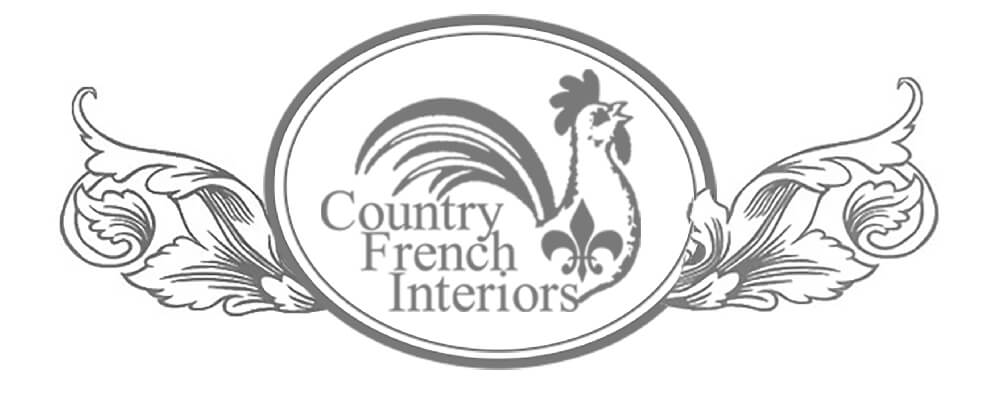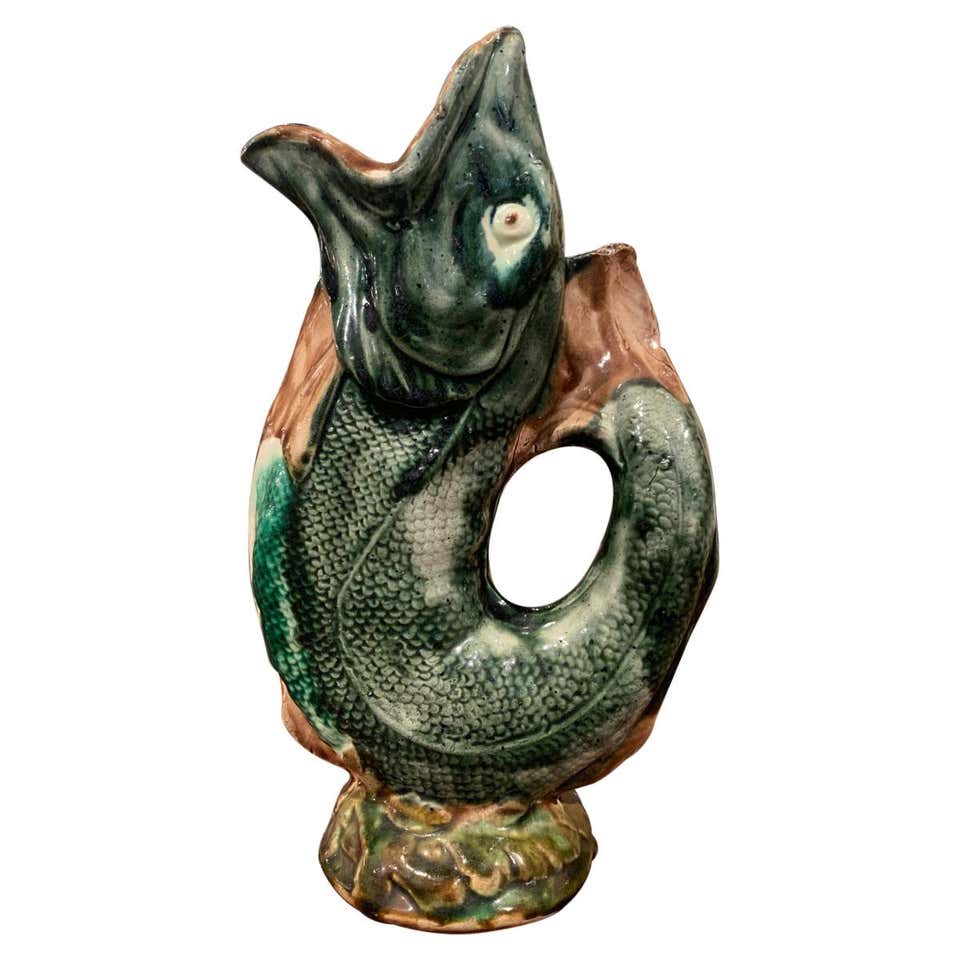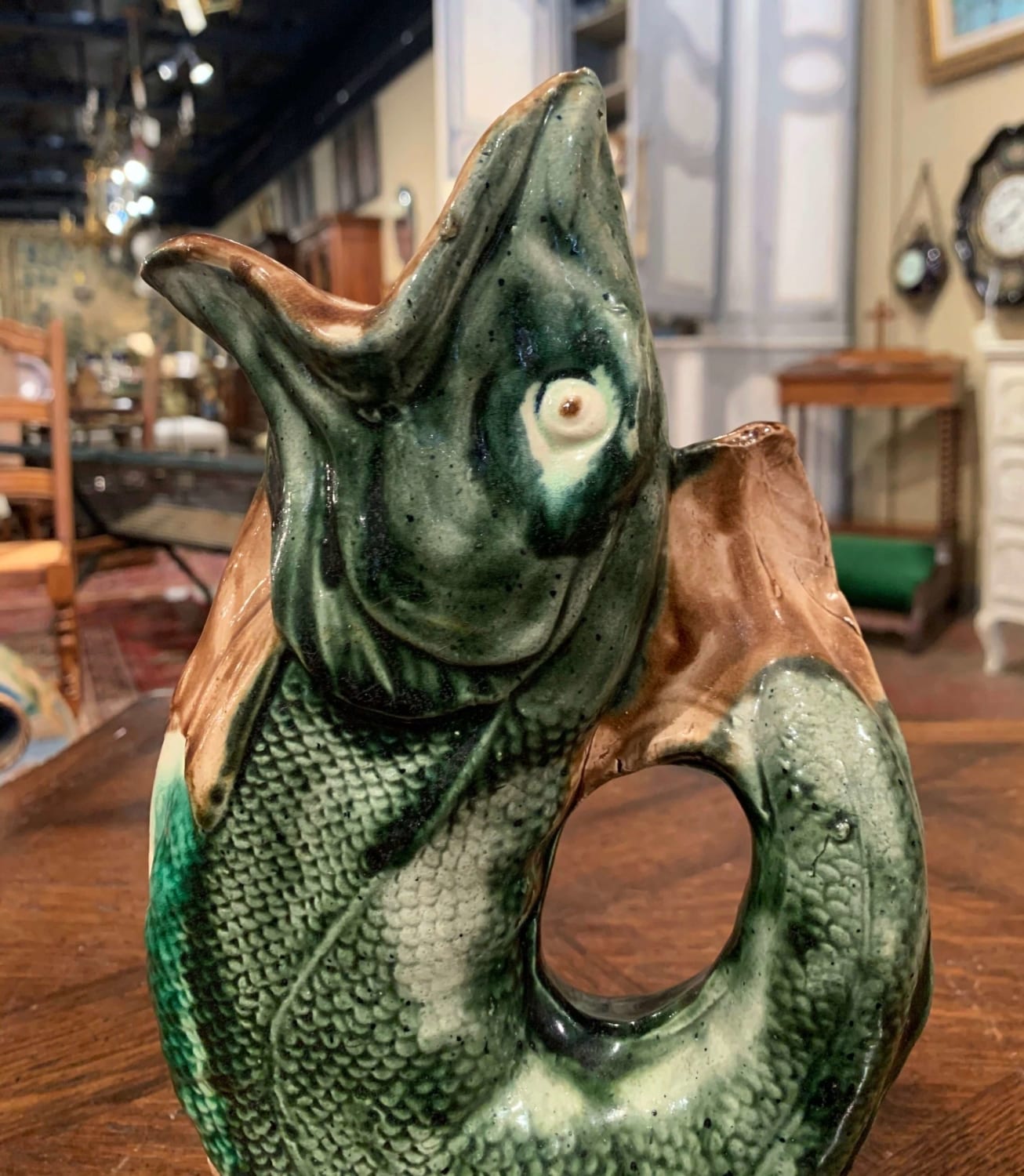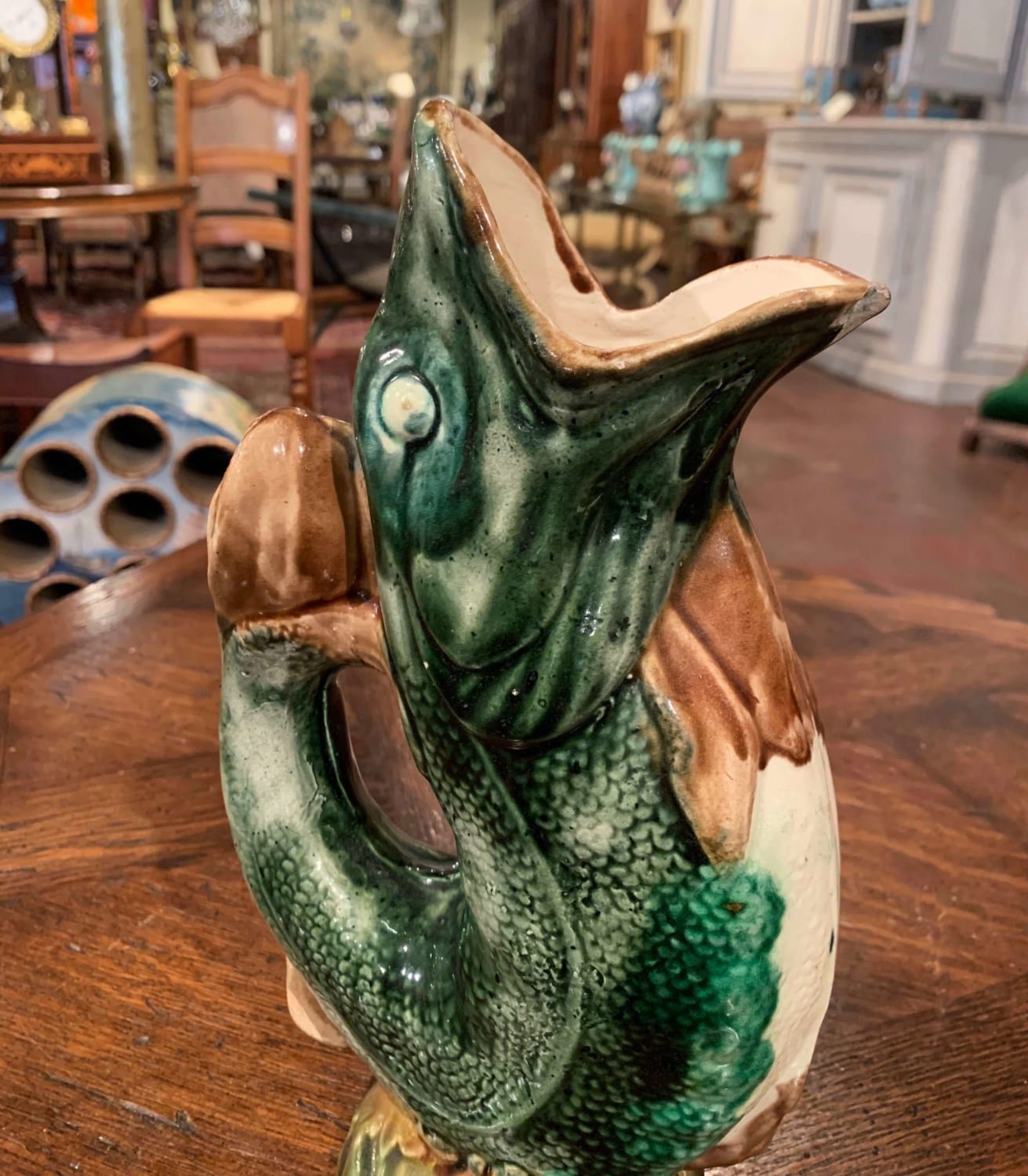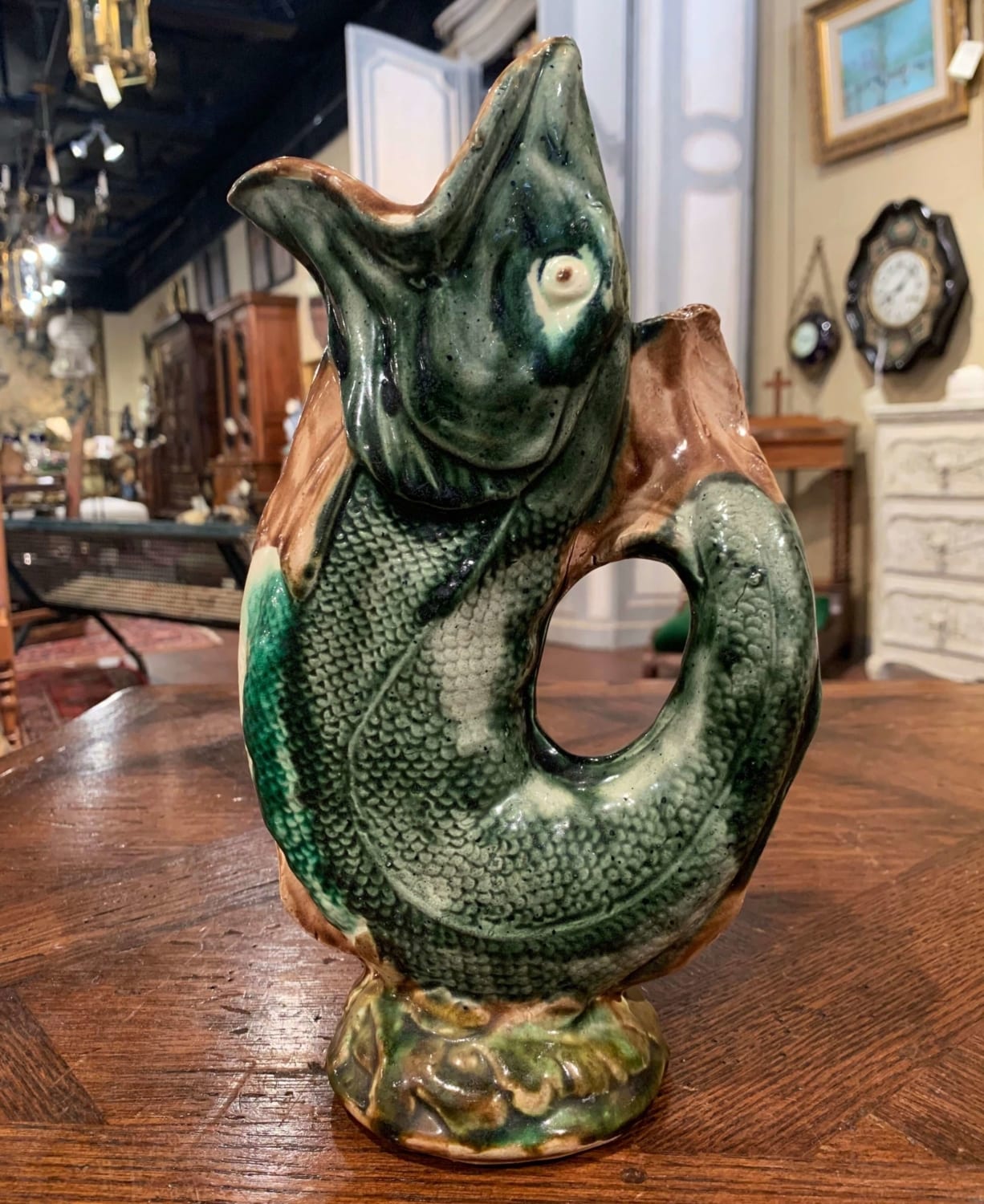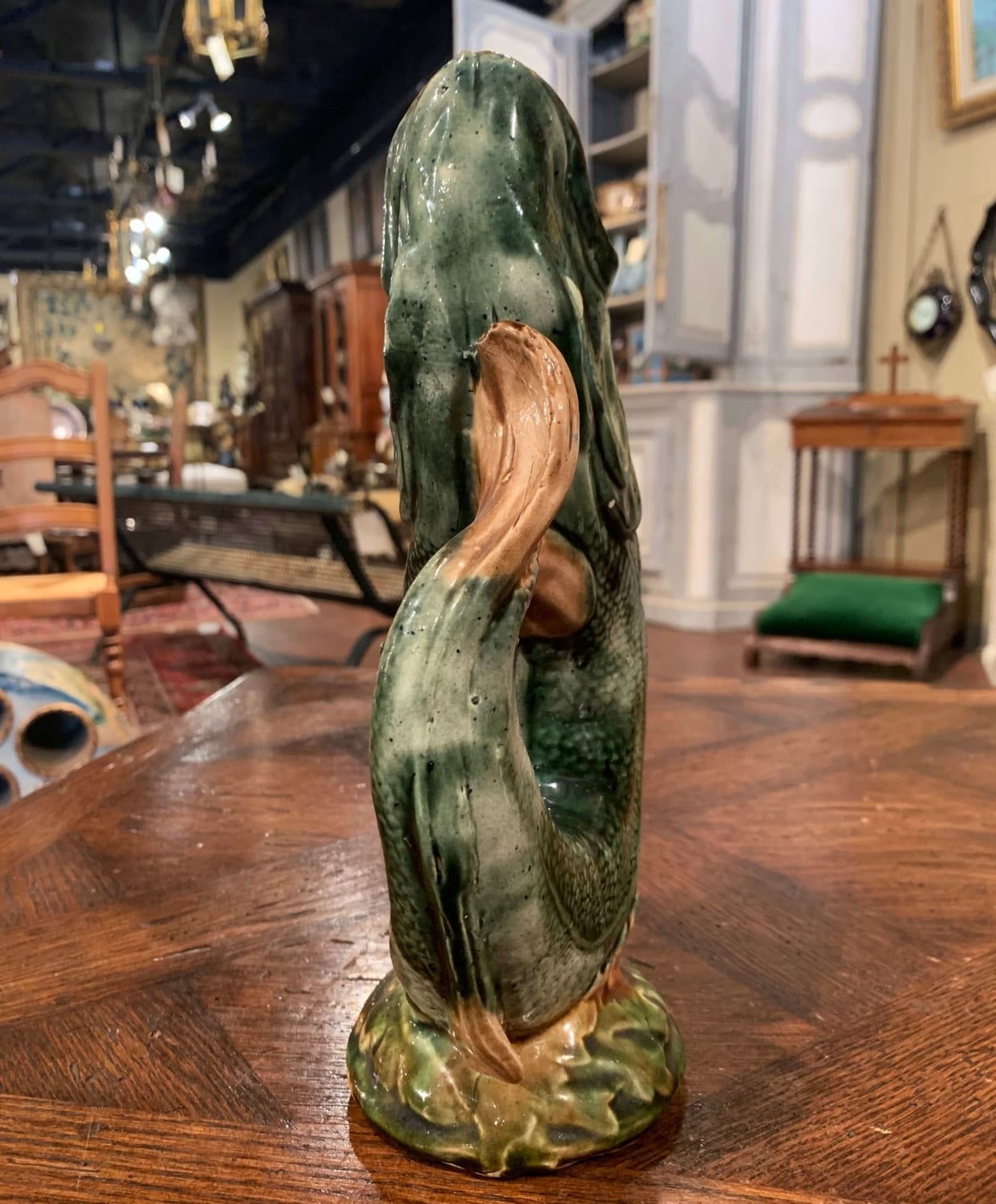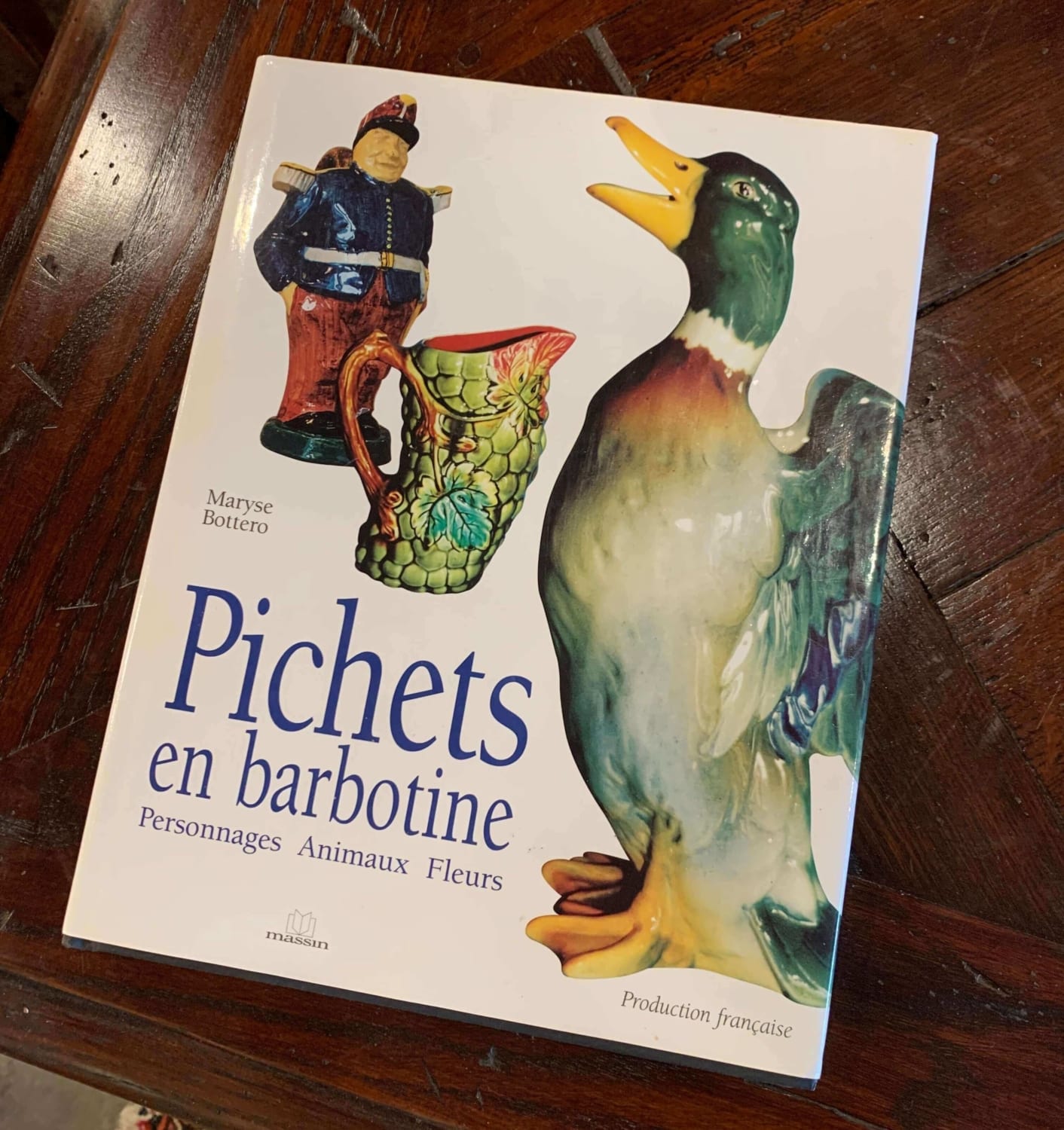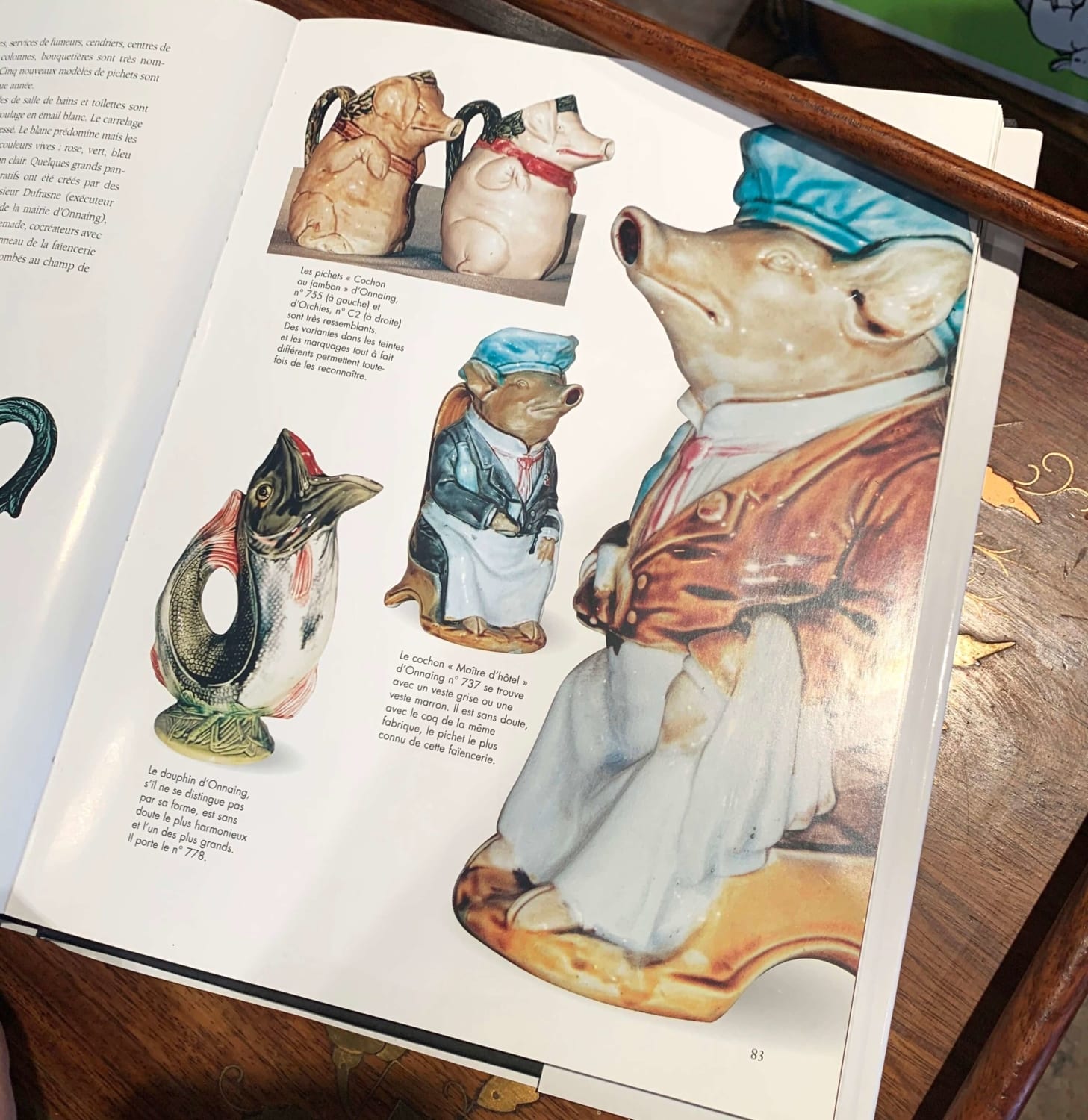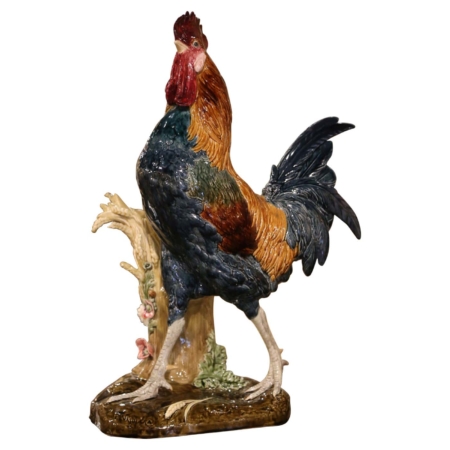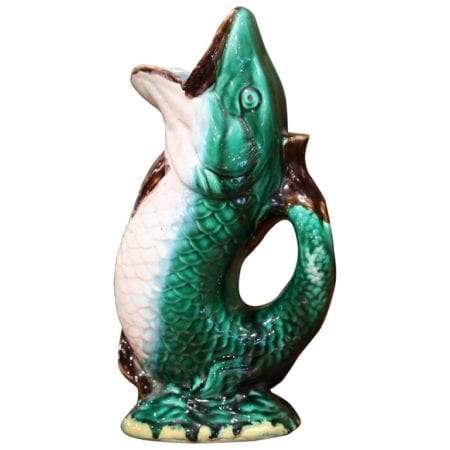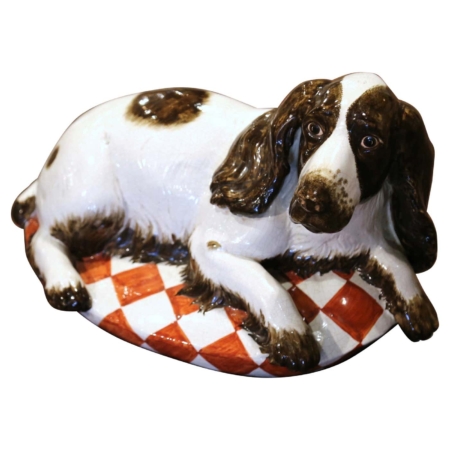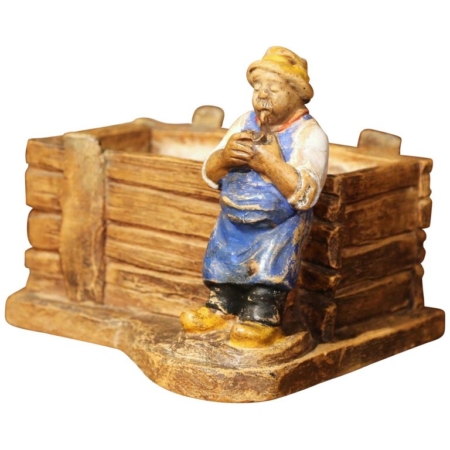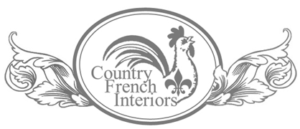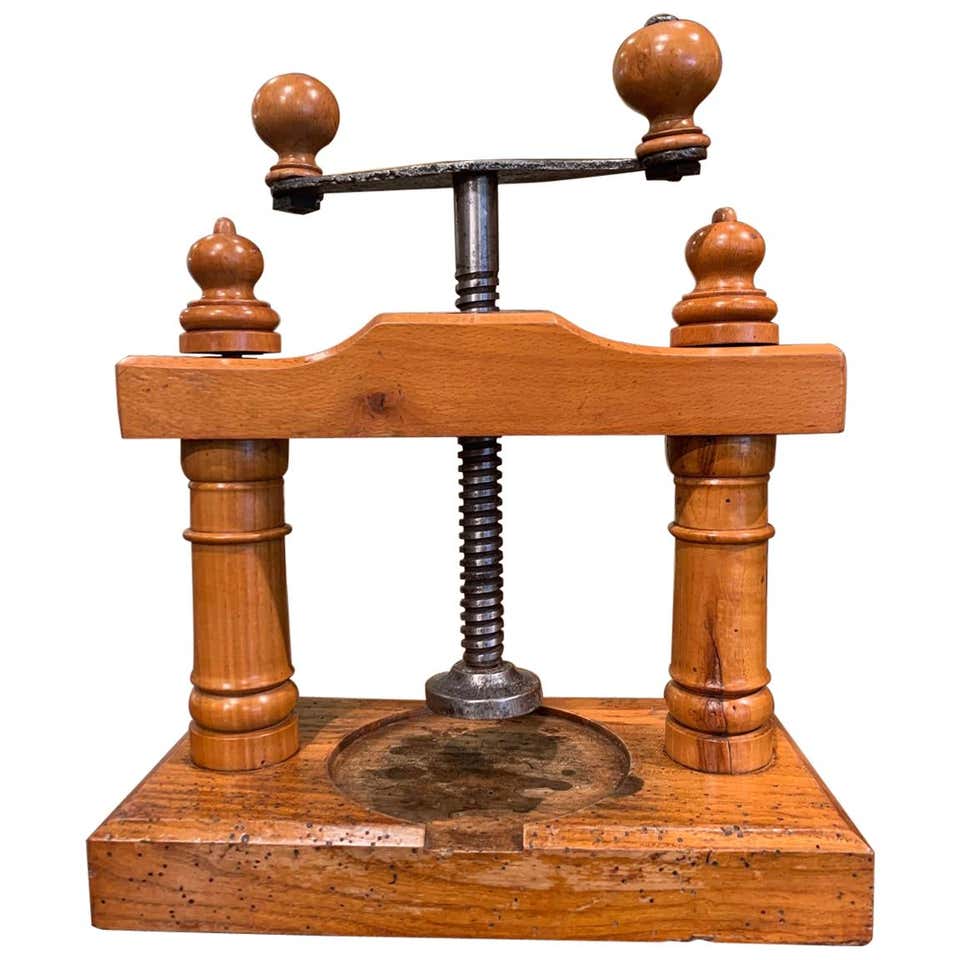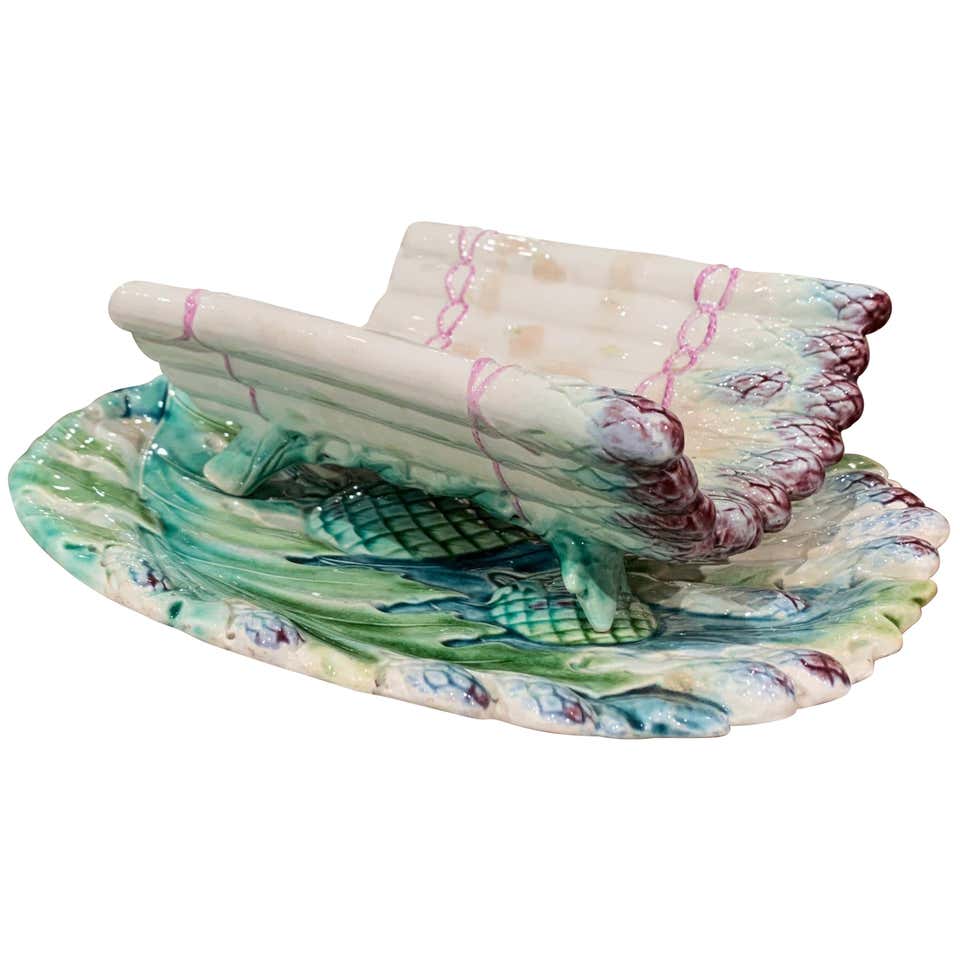19th Century French Painted Ceramic Barbotine Fish Pitcher Onnaing Style
$475
About
This lively pitcher would make an interesting addition to any porcelain collection. The colorful, antique water pitcher shows the beautiful artistry and painterly application of color true to Majolica ceramics. The porcelain vase was sculpted in France, circa 1890 and is in the shape of a colorful fish in a standing position with a wide open mouth. The Onnaing style pitcher is hand painted in a neutral palette of the green, beige and white. The jug is in excellent condition with richly patinated colors throughout. Pictured in the book “Pichets en Barbotine” by Maryse Bottero page 82. See last pictures. The Onnaing Faiencerie was founded in Onnaing, France, in 1821 by Charles de Bousies. During the second half of the 19th century, the Mouzin brothers bought the factory and ran it until the factory closed in 1938. It was nearly destroyed by the Germans during World War I, but production restarted in 1921. The factory made mostly Majolica pitchers and planters. Onnaing designs included flowers, geometric patterns and famous historical figures, among others. Each design had a number and a corresponding model name. The marks “Frie Onnaing” and “Made in France” indicate that it was made after World War I. The two brothers L’Herminé Declercq, Emile and Joseph, set up a ceramic manufacture in Orchies (in Flanders), in 1886. Emile already owned a pottery factory in nearby Belgium, in the town of Rebaix, but wanted to expand his output through a joint venture with his brother. It is worth noting that Orchies was situated close to the famous ceramic center of Saint-Amand-les-Eaux where the Moulin des Loups factory had been based since the 18th century. The company started producing Majolica at the end of the 19th century and by the early 1900s produced over twenty humorous Majolica jugs including modelled animals including cats, dogs, roosters, pigs and more rarely the braying donkey jug and squirrel jug. The company is only known to have produced few toby jug designs depicting three quarter length rather than head and shoulder figures and these are hard to find today. Measures: 6″ W x 4″ D x 11″ H.
Additional information
| Dimensions | 6" W x 4" D x 11" H |
|---|---|
| Period | Late 19th Century |
| SKU | 201-173 |
Related products
Country French Interiors, Inc.
1428 Slocum St.
Dallas, TX 75207
(214) 747-4700
